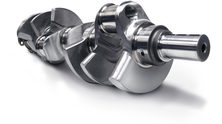Robsweden
Well-known member
Hi
Im taking that route this winter, but which kit do you recommend ? Heads are 2v CHI heads with 65cc chamber. Would be nice if it can be ordered directly from Summit.
Scat ? Eagle ? etc. What Is your experience? Daily driver with some extra power
Im taking that route this winter, but which kit do you recommend ? Heads are 2v CHI heads with 65cc chamber. Would be nice if it can be ordered directly from Summit.
Scat ? Eagle ? etc. What Is your experience? Daily driver with some extra power






















































